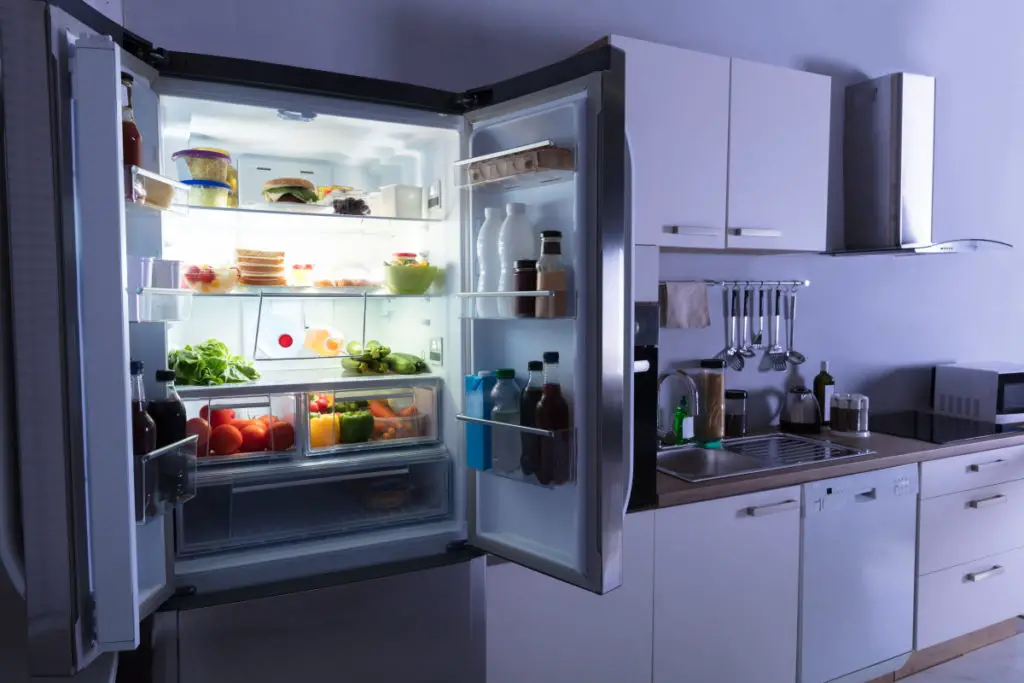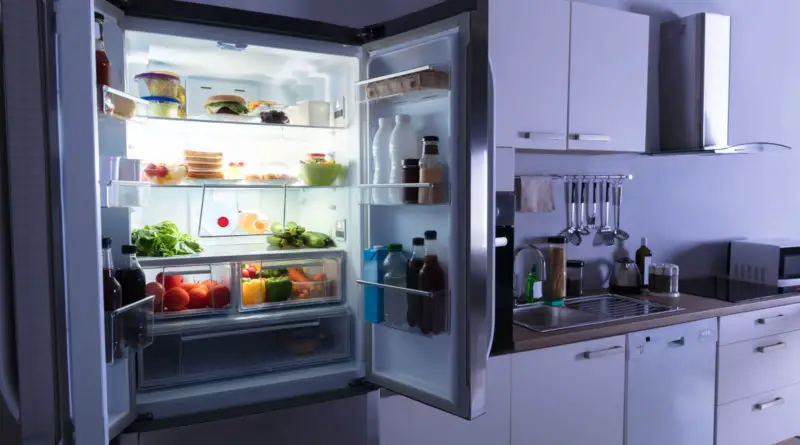Tips for a Well-Organized Fridge
Disclosure: This post contains affiliate links. For more information see the Affiliate Disclaimer.

Perhaps you’re someone who simply puts your groceries in the fridge wherever you can find the space, without giving it much thought.
This can result in a messy, disorganized fridge.
And the struggle to find what you need, when you’re ready to cook.
Not to mention spoiled produce and other food that you’ve lost track of.
It’s possible to organize your fridge so that you can stay on top of what you have inside, save time, and have the peace of mind that comes with a well-organized fridge.
Here are some smart tips to organize your fridge.
Clean The Interior
Before you organize your fridge, it is important to clean it thoroughly.
Remove all items first and proceed to use a wet cloth with mild or diluted soapy water and wipe down the interior.
Place your perishables in a cooler while you clean.
And, use this opportunity to get rid of any expired food or produce.
Also, perhaps you purchased something on a whim with good intentions and now that some time has passed, you are certain that neither you nor anyone in your family will consume it. Anything in this category can be discarded.
Reasons to Organize Your Fridge
Energy-Efficiency
Understanding what to store where makes it easy to quickly access what you need and is also energy-efficient.
For example, while you are looking for the salsa you thought you bought the other day, you are letting all the cool air escape. This makes your fridge work overtime to cool the air again.
Overloading the fridge shelves reduces airflow. This may cause ice build-up in some fridges. When there is ice build-up, the fridge works harder to regulate temperatures. Be mindful of the vents the next time you place your groceries in the fridge, as blocking them also reduces airflow.
If your fridge is less energy-efficient, it may lead to a higher electricity bill.
Save Time
Regardless of the size of your fridge, it can get cluttered.
And with clutter, you’ll spend extra time looking for the items you need.
Organizing your fridge will save you time.
Knowing where everything is and being able to see it and grab it without spilling anything else saves you time and frustration.
Better Inventory of What’s Inside
If you have a big freezer and poor organization, it lowers your chances of finding things.
And if you can’t find what you are looking for after a thorough search, you go out and buy it.
However, when you put the new item in the freezer, you find that what you were initially looking for was there all the time. It’s not a bad thing having two packs of fish fillets, but that is how clutter happens. And this is exactly why keeping an inventory of what is inside, is important.
Fridge Organization Tips
1. Organize Food by Zones:
Doors and Top Shelves
The fridge doors and top shelves are the warmest parts of the fridge. If you have been storing milk and eggs there, consider relocating them to the middle section. Fridge doors make the best home for condiments, juices, butter, and soft cheeses.
Crispers
Crispers or the drawers at the bottom of the fridge are often home for fruits and vegetables. The reason for this is because they are temperature controlled and the food you keep in there stays fresh for a longer time. This is why crispers are a great spot for fresh produce.
To keep fruits and vegetables organized remove their wrapping for easy access and visibility.
Another tip to cut down on time spent washing out the crispers and to make clean-up easier overall, is lining them with paper towels or water-resistant shelf liners.
Lower Shelves
The bottom shelves in the fridge are the coldest and ideal for food items like raw meat, poultry, fish, milk, and cream.
When it comes to meat and fish, in addition to keeping them on the bottom shelf, store them in a separate container to control any dripping that might occur. This way you minimize the risk of bacteria build-up and any spills that you don’t notice right away.
2. Use shelf liners that are easy to clean
As previously noted, lining the crisper with paper towels or water-resistant liners will save you time from having to wash out those drawers often. Using washable, non-slip liners on the shelves helps to combat stickiness and stains that can develop if something spills. They come in different colors for those who like color-coding and are easy to wash and dry, so you can reuse them as many times as you need to.
3. Make Use of Containers to Keep Items in Place
Just as baskets, bins, and containers, help keep your cupboards and kitchen cabinets organized, they can also serve the same purpose in the fridge. Invest in some and you will see the difference they make. A simple tip is to use clear fridge bins. This makes it easier to see what’s inside.
4. Use Bottle or Can Dispensers
Whether it’s water bottles or soda cans, using a dispenser enables you to stack your beverages on top of each other. Not only does this save space but time is saved as you’re not rooting around the fridge trying to reach the soda can in the back. You can grab-and-go from the dispenser.
5. Keep a Pen Near the Fridge and Labels for Easy Accessibility
This is an underrated tip. Putting labels on your food containers helps you quickly identify what you have. This is useful even for transparent containers. Also, including the date on the labels will help you identify how old are the items you have put away. You don’t want to end up eating your Thanksgiving leftovers a year later.
Develop a weekly habit of going through items, looking at the dates, and discarding what is too old.
You can also use labels to help you keep items you want to consume sooner, at the front. This way, you won’t forget them and they won’t go bad.
These easy-to-use food labels allow you to add both the contents and date quickly.
A smart thing to do is to keep labels and a marker near the fridge for easy accessibility.
Recap
Organizing your fridge has several advantages:
- Energy efficiency: use less electricity to keep your fridge cool.
- Save time: spend less time searching for what’s inside.
- Inventory: know exactly what’s inside your fridge.
Remember these tips:
- Organize Food by Zones:
- Meat and fish at the bottom in containers.
- Milk and eggs on the middle shelf.
- Dairy and cream on the bottom shelf where it’s coldest.
- Condiments in the door area.
- Fresh produce in the crispers.
- Use shelf liners that are easy to clean.
- Make use of containers to keep items in place.
- Use a bottle or can dispenser to store beverages.
- Label and date contents, and keep the labels and a pen near the fridge.
